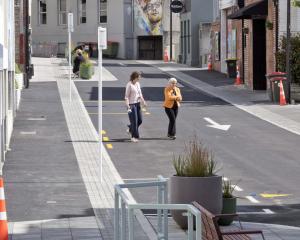
The region's main centres all recorded higher than normal temperatures and most had less rainfall than usual, with some areas receiving less than a third of the rain they could usually expect, MetService records show.
Just under 23mm of rain fell on Dunedin, making January the fifth driest month since records started at Musselburgh in 1918.
The driest month was March 2001, when only 2.2mm fell.
With 31mm of rain, Oamaru received only 61% of its normal January rainfall, although that was not near its lowest recorded levels, while Queenstown received 108mm, significantly more than usual, with most of it (55mm) falling on Friday and Saturday.
With 13mm, Alexandra had only 27% of its usual January rain, while Middlemarch received the second lowest amount (12mm) in January since records there began in 1908.
The Middlemarch area was also significantly warmer - temperatures there were, on average, 2.2degC higher than usual for January.
Other centres were about 1degC warmer than usual.
Sunshine records were available only in Dunedin, and meteorologist Georgina Griffiths said it was the city's second sunniest January since records began in 1947.
Dunedin averaged about eight hours of sunshine a day, bringing in a total of 246 hours for the month, second only to the 279 hours observed in January 2008.
''It was only the last two days of the month that let everyone down.''
Highs over the South Island and to the east in January fended off incoming rain bands ''very effectively'', keeping the skies dry and allowing the sunshine to ''drill right in'', Ms Griffiths said.
Temperatures were warm due to light winds and sunny conditions associated with the high, and intermittent northwesterly winds over the month.
But it was not to last; Otago's weather was making a shift to cooler southwesterlies, she said.
''We're about to see the first true southwesterly change of 2015. This drops the temperatures for Otago markedly.''
However, it may not necessarily bring rain. Niwa reported that rain forecast for the majority of the South in the next few weeks was not likely to be enough for a significant increase in soil moisture. Its outlook for the next three months is also not flash for those looking for rain.
Temperatures will most likely stay in the above average range, rainfall is likely to be near or below normal levels, and soil moisture levels and river flows are most likely to be in the below normal range.












